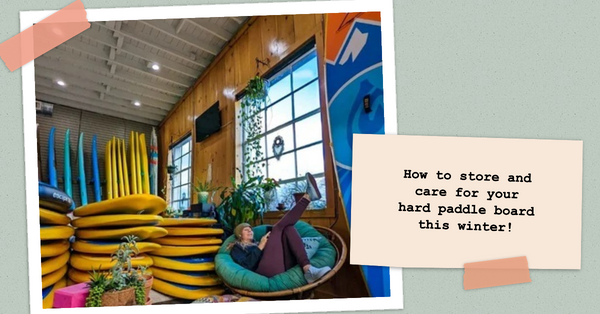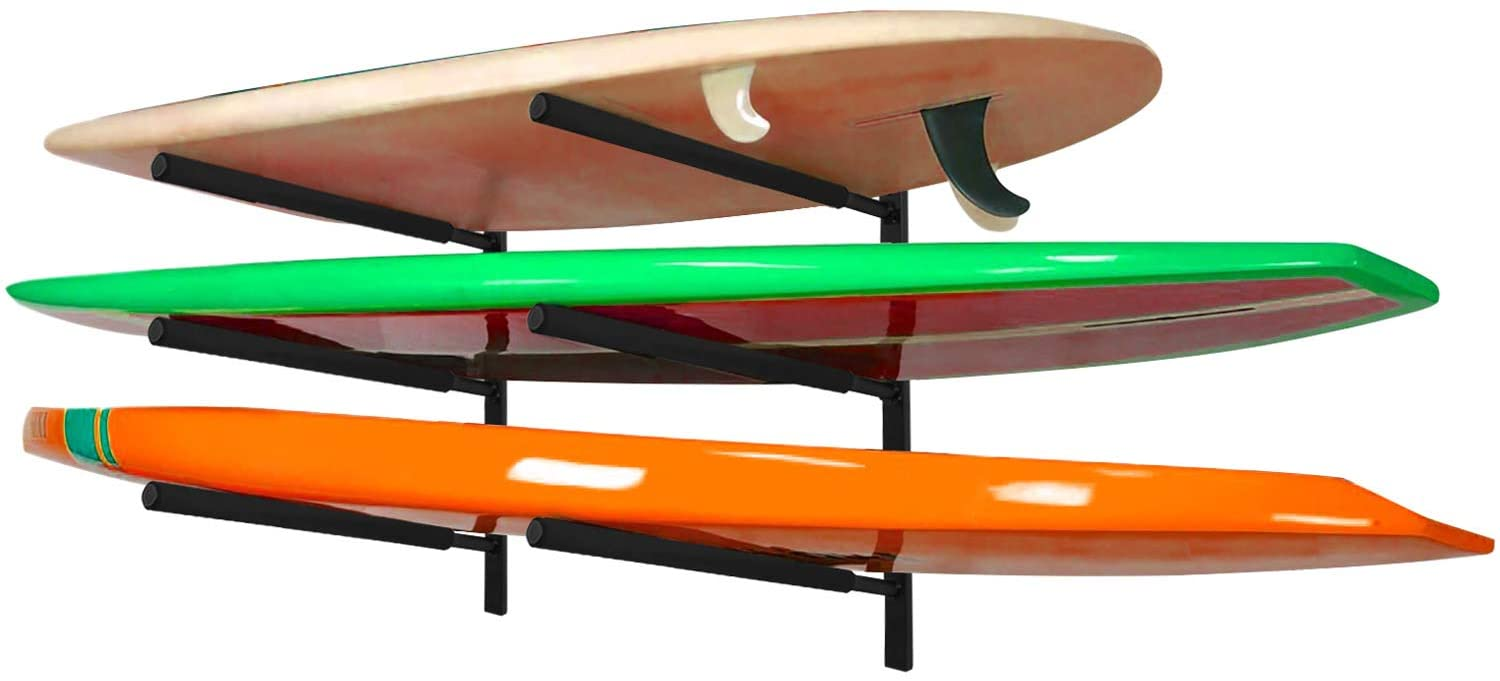
Winter Care Tips for Hard Paddle Boards: Keep Your Board Adventure-Ready All Year
Keep your hard paddle board in peak shape this winter with Glide’s expert maintenance and storage tips. Learn how to clean, protect, and store your SUP safely.
Table of contents
This comprehensive guide walks you through everything you need to know about winter care for hard paddle boards—from cleaning and inspecting to smart indoor and outdoor storage. Follow these steps to protect your investment, prevent damage, and ensure your board is ready to perform when the paddling season returns.
Hard Paddle Board Winter Care Starts Here
When the chill of winter sets in and the lakes start to ice over, it’s time to give your hard paddle board the attention it deserves. Proper winter care isn’t just about cleaning—it’s about protecting your investment so it performs flawlessly when spring paddling season returns.
Whether you paddle a fiberglass, epoxy, or carbon fiber hard board, following these practical storage and maintenance tips will keep it looking and performing like new for years.

🏄 What Makes Hard Paddle Boards Special
Hard paddle boards—often called solid SUPs—are prized for their rigidity, glide, and performance. Made from durable materials like fiberglass, epoxy, or carbon fiber wrapped around a foam core, these boards slice through the water effortlessly and respond precisely to every stroke.
Compared to inflatables, hard SUPs:
-
Offer superior speed and tracking
-
Handle waves and surf conditions more effectively
-
Deliver a smooth, stable ride with instant feedback
-
Require less setup time—just grab and go
Because of their rigid design, they also need extra care during long storage periods—especially in cold or damp winter environments.
🧼 Step 1: Clean Your Board Thoroughly
Before storing your board for the winter, start with a deep clean. Salt, sand, and algae can degrade your board’s finish over time.
Cleaning Tips:
-
Rinse your board thoroughly with fresh water to remove salt and debris.
-
Use mild soap and a soft sponge to clean dirt and grime from the deck and hull.
-
Avoid harsh cleaners—chemicals can damage epoxy or gel coatings.
-
Pay attention to fin boxes and deck pad edges, where grit often hides.
-
Let it dry completely before storage to prevent mold or mildew.
💡 Pro Tip: For saltwater paddlers, always rinse hardware and leash plugs to avoid corrosion.
🔍 Step 2: Inspect for Damage
After cleaning, inspect your board carefully for cracks, dings, or pressure dents. Even small cracks can let water seep into the foam core and cause delamination in freezing temperatures.
If you find:
-
Minor scratches or chips: Repair with an epoxy ding repair kit.
-
Deeper cracks or soft spots: Let a local board repair shop handle it before storage.
Repairing damage early prevents small issues from turning into expensive structural problems later.

🧊 Step 3: Store Your Board Properly for Winter
The most critical part of hard paddle board winter care is proper storage. Cold temperatures, moisture, and UV exposure can damage materials, warp surfaces, or cause discoloration.
Indoor Storage (Best Option)
If you have garage or basement space:
-
Store your board off the ground using a wall rack or padded hooks.
-
Keep it in a temperature-controlled, dry area.
-
Cover it with a SUP bag or breathable fabric cover to prevent dust and scratches.
-
Don’t store it upright on its tail—it can cause pressure damage over time.
Outdoor Storage (If You Have No Choice)
When indoor space isn’t available:
-
Choose a sheltered, shaded spot, like under a deck or carport.
-
Use a high-quality, UV-resistant, waterproof board cover.
-
Place the board on padded supports—not concrete or dirt.
-
Keep the cover slightly open at one end for ventilation to prevent condensation.
-
Check every few weeks for signs of water intrusion or rodent activity.
💡 Pro Tip: Never leave your hard SUP exposed to direct sunlight or snow piles—it can weaken resin and warp the core.
🧰 Step 4: Maintenance During the Off-Season
Winter downtime is perfect for small maintenance tasks that keep your board in top form.
-
Wax check: Remove old wax and apply a light coat of board wax if you use one for surf-style traction.
-
Hardware care: Inspect fin screws, leashes, and plugs for corrosion or damage.
-
Fin storage: Remove fins, dry them, and store them separately to prevent bending or cracking.
-
Deck pad refresh: Clean and inspect the EVA deck pad for peeling edges—re-glue if needed.
🌡️ Step 5: Temperature Awareness
Hard paddle boards are tough—but not immune to temperature extremes.
-
Avoid freezing conditions: Expansion and contraction can cause micro-cracks.
-
Avoid hot attics or garages: Heat can soften epoxy and lead to delamination.
-
Ideal range: Store your board between 45°F–75°F whenever possible.
-

🌊 Bonus: Pre-Season Checklist for Spring
When winter ends and it’s time to paddle again, use this quick checklist before your first session:
-
Re-inspect for dings, cracks, or soft spots.
-
Reinstall fins and check alignment.
-
Clean off dust and wipe down with UV-protectant spray.
-
Test the leash and PFD for wear.
You’ll be ready to hit the water the moment the ice melts.
🌅 Final Thoughts: Protect Your Investment Year-Round
A hard paddle board is more than gear—it’s a long-term investment in your outdoor lifestyle. With the right winter care routine, you’ll avoid costly repairs, extend your board’s lifespan, and ensure it’s ready for spontaneous spring sessions.
At Glide SUP, our hard boards are built to last with premium epoxy construction, eco-friendly materials, and meticulous craftsmanship. Whether you’re carving surf lines or cruising glassy lakes, a little winter prep will keep your Glide board performing like new—season after season.
🧭 FAQs
Can I leave my hard paddle board outside all winter?
It’s not ideal. Outdoor storage should only be a last resort—use a UV-resistant cover and store it out of sunlight and precipitation.
Should I wax my hard SUP before storage?
You can, but it’s optional. A light coat of surf wax adds protection but remove old residue first.
How do I prevent mold or mildew during storage?
Make sure your board is completely dry before bagging. For outdoor storage, keep one end of the cover slightly open for airflow.
Can cold temperatures damage epoxy or fiberglass boards?
Yes—freezing temps can cause expansion cracks or delamination. Always store in a moderate, dry environment.
What’s the best rack for storing a hard paddle board?
Wall-mounted or suspension racks with padding are ideal. Avoid leaning your board directly on concrete or sharp surfaces.





